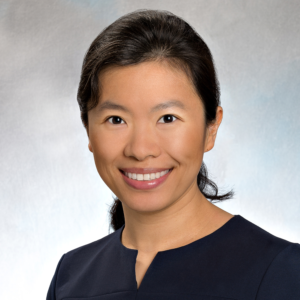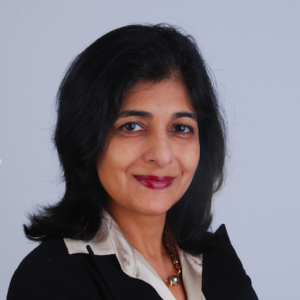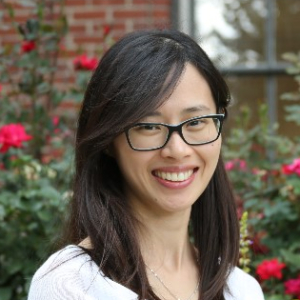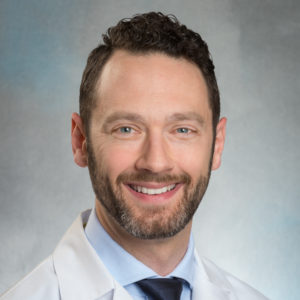
Linda Bi, M.D., Ph.D
Medical Need
No reliable parameters exist that can consistently predict the tumor subtype and associated clinical course upon initial radiographic detection of a mass in the central nervous system. The analysis of large radiology data sets (radiomics) offers opportunities for non-invasive characterization and tracking of tumors.
Current Research
Dr. Bi’s team applies artificial intelligence algorithms, such as deep learning, to images, to recognize complex patterns, with strong association to the biological characteristics of the tumor and clinical outcome. Initial results have demonstrated the association of tumor phenotype, based on its imaging appearance, with tumor grade and specific genetic features. Dr. Bi’s work is focusing on tracking and predicting tumor behavior over time and improve our ability to inform management decisions and patient counseling.

Tanuja Chitnis, M.D.
Medical Need
Multiple Sclerosis (MS) is a chronic autoimmune disorder of the central nervous system causing physical, mental and sometime psychiatric problems. Over 2.3 million people are affected by MS worldwide for which there’s no cure. Tanuja Chitnis is the Medical Director of the CLIMB study a large-scale, long-term study of patients with MS which will inform precision medicine approaches towards the treatment of MS patients.
Current Research
As part of the CLIMB study we are:
1. Following-up over 2000 patients over ten years to create a longitudinal measure of the disease as opposed to a single snapshot.
2. Enhancing MRI imaging analysis of patients by adopting 3-dimensional techniques to segregate MS types and create predictive models of the disease.
3. Analyzing MS patients genetics, gene expression data, proteomics data, and immune phenotypes and correlate it with clinical and MRI imaging as well as treatment and disease outcomes.
4. Building analytics programs that will predict which patients who are likely to respond to specific therapies.
5. Developing drugs that address the inflammatory and degenerative component of MS.
More at: CLIMB

Choi Fong Cho, Ph.D.
Medical Need
Advanced brain cancers, including glioblastoma, are extremely deadly and incurable. Even after undergoing surgery followed by chemotherapy, radiotherapy or both, patients life expectancy is limited because:
- Aggressive brain cancer cells tend to invade and incorporate themselves into the surrounding normal brain tissue.
- Chemotherapy drugs are often unable to reach these cells, as they are protected by a highly-evolved barrier, called the blood-brain-barrier (BBB) that separates brain tissues from circulating blood.
- Chemotherapy is very toxic to normal tissues and can cause severe side effects.
Current Research
Dr. Cho has established a collaboration among Brigham and Women’s Hospital, the Broad Institute and Massachusetts Institute of Technology, aimed at developing a high-throughput platform that can be used to accurately model drug delivery across the blood brain barrier to reach the tumor cells. Additionally, she is also working to develop new therapeutic drugs which can recognize and kill tumor cells without harming healthy tissues.

David M. Meredith, M.D., Ph.D.
Medical Need
As the classification and treatment of CNS tumors increasingly requires an integrated approach with advanced genomic methods, there is an increased need to identify recurrent genetic aberrations that facilitate the most accurate assessment of tumor class and biologic potential. Furthermore, the identification of novel diagnostic and prognostic immunohistochemical markers is critical to reduce costs and delays in diagnosis and is especially useful in cases where material is limited.
Current Research
– To identify recurrent copy number and single nucleotide variants in IDH-mutant gliomas that characterize tumor progression
– To identify novel diagnostic and prognostic immunohistochemical markers of glial tumors
– Participation in clinical trials investigating targeted therapeutics in glioblastoma

Clemens R. Scherzer, M.D.
Medical Need
We use big data to reinvent health care for Parkinson’s and brain diseases. Our goal is to match drugs and tests to individual patients based on a search of each patient’s disease biology. Our interdisciplinary lab includes computer scientists, biologists, and clinicians.
Current Research
1. This ParkinsonDiscovery Engine is powered by massive genome, biology, and health data being generated from the Harvard Biomarkers Study, today with more than 2,600 participants one of the largest longitudinal biobanks for Parkinson’s in the world.
2. To understand how the human genome encodes brain cells in health and disease we are establishing a Brain Cell encyclOpeDia of all transcribed Elements (BRAINcode) in using ultra-deep, cell-type specific, whole transcriptome sequencing.
More at: Scherzer Laboratory


